Name Judithe Hernandez | ||
 | ||
Culture fix judithe hernandez on the role of women in the chicano art movement
Judithe Hernández (born 1948 in Los Angeles) is a Los Angeles-based artist whose career began as a founding member of the Chicano Art/Los Angeles Mural movements. She first received acclaim in the 1970s as a muralist. In her long career as a studio artist her artistic practice as centered on works-on-paper, principally pastels, which frequently incorporate indigenist imagery and the social-political tension of gender roles. Hernández has lived both in Chicago, Illinois and Los Angeles. In 1974, she became the fifth member, and only woman, in Los Four, the influential and celebrated East Los Angeles Chicano artist collective, along with Gilbert Luján, Carlos Almaraz, Frank E. Romero, and Roberto de la Rocha. As early as 1970, Hernández was involved in the initial efforts of Chicano artists in East Los Angeles to organize. Of this experience, Hernández later said that "Often I was literally the only female at meetings who was not a girlfriend or wife, but an active artist participant."
Contents
- Culture fix judithe hernandez on the role of women in the chicano art movement
- Judithe hernandez at sac state for artist panel o
- Early life and education
- Career
- Solo Exhibitions
- Two Person Exhibitions
- Public Art Commission
- Public Private and Corporate Collections
- Fellowships
- Artist in Residence
- Our america audio podcast judithe hern ndez reina de la primavera
- References
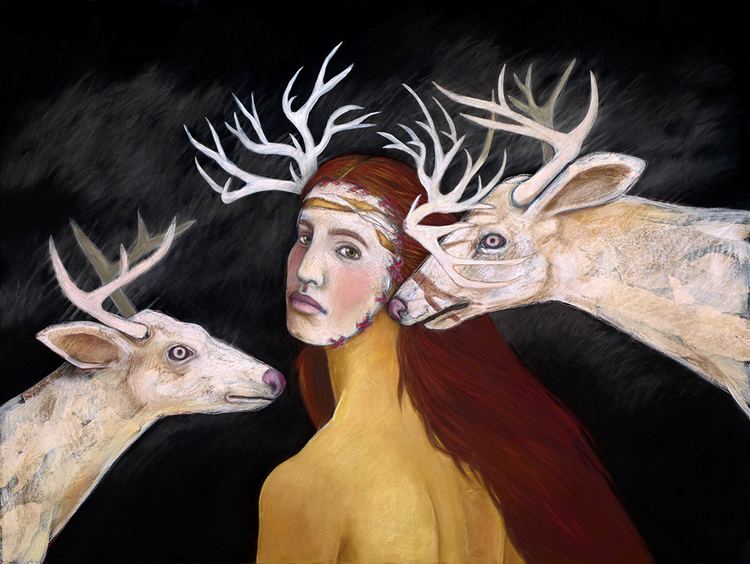
Judithe hernandez at sac state for artist panel o
Early life and education

In 1965, Hernández became the first student to win the "Future Masters Scholarship" (awarded at LACMA and funded by the Sears & Roebuck Foundation and the Los Angeles Chamber of Commerce) which enabled her to attend Otis Art Institute in Los Angeles. In 1972, after earning a B.F.A. at Otis, she began graduate studies there. When Carlos Almaraz enrolled in the graduate program that year, it marked the beginning of a long friendship and professional association as members of Los Four. Along with Almaraz, she became involved in the Chicano civil-rights movement and worked on such projects as the Chicano Moratorium Against the War. During her time at Otis, Hernández studied drawing with the renowned artist Charles White. White, an African-American artist had spent time in Mexico, and was an admirer of indigenous and Latin American art. In 1971, while working as the illustrator of the Aztlán Journal, published by the UCLA Chicano Studies Research Center, Hernández illustrated the first volume of poetry by the celebrated Mexican-American poet Alurista, Floricanto en Aztlán. In 2013, the 40th anniversary edition of Floricanto received three prizes at the International Latino Book awards.
Career
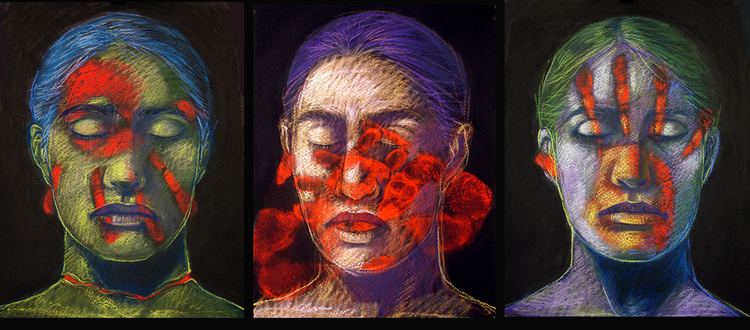
After earning her M.F.A.'s at Otis, she and Almaraz collaborated with El Teatro Campesino, worked on behalf of the United Farm Workers, and as members of the Concilio de Arte Popular (CAP), they worked to create an organization that united Chicano artists across the state of California. Chicano arts organizations such as the Royal Chicano Air Force of Sacramento; Galeria de la Raza, in San Francisco, and the artists of Chicano Park in San Diego were among those who during the 1970s participated in CAP. In 1981, she and seven other Chicano muralists painted murals inside the Craft and Folk Art Museum in Los Angeles for an exhibition entitled The Murals of Aztlán. She and the other artists were criticized in Artweek by reviewer Shifra Goldman for "shedding … their cultural identity and political militance" in order to "enter the mainstream as competitive professionals." Hernández responded "why should changes in my work and socio-political attitudes be construed as compromising my commitment … while in another artist the same would be construed as personal and professional growth?"

In the early 1980s Hernández relocated to Chicago and lived there for more than 20 years before returning to Los Angeles in 2010. Her final exhibition in Chicago was a major solo exhibition of new work at the National Museum of Mexican Art. La Vida Sobre Papel, opened in January 2011 and included several new series of work, one of which was the noted serial murders of women in Ciudad Juárez. According to the Chicago Weekly, "The only thing as conspicuous as the artist’s skill is her message: being human is hard, a woman harder, and life as a Latina occasionally downright grisly."
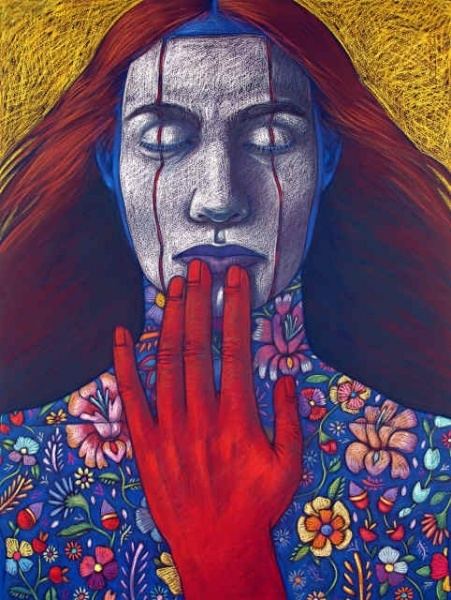
In 2011, Hernández was among a select group of artists whose contributions to the art of Los Angeles were honored in multiple exhibitions which were part of the sweeping arts initiative known as Pacific Standard Time: Art in L.A., 1945–1980 (PST), funded by the Getty Foundation and the Getty Research Institute. In 2012 Hernández was the recipient of two major awards; the prestigious C.O.L.A. Fellowship (City of Los Angeles Individual Artist Fellowship) for 2013, as well as the coveted commission to create public art for the Metro EXPO LINE Terminus Station at Colorado & 4th Street in Santa Monica by the Metropolitan Transportation Authority of Los Angeles. The Expo Line Downtown Santa Monica station opened on May 20, 2016. "The station at the edge of the continent" will feature 24 works by Hernández positioned over its two passenger platforms and a sculpture installation at the plaza level by San Francisco-based architect Walter Hood. It is expected to be one of the most traveled light-rail lines in the U.S.
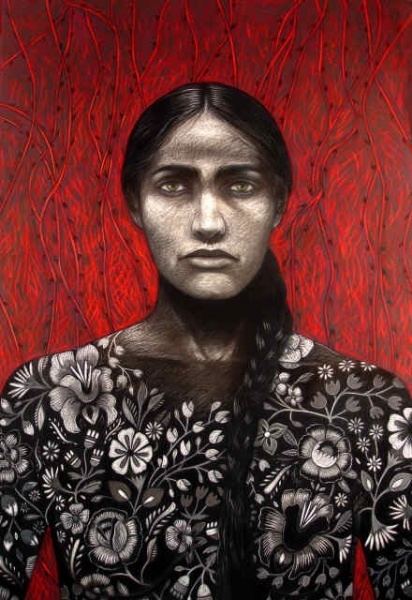
In 2013, Hernández was one of 72 artists chosen for the first major exhibition of contemporary American artists of Latino descent at the Smithsonian American Art Museum from works in their permanent collection. "Our America: The Latino Presence in American Art" opened in October 2013. After closing in January 2014, the exhibition is scheduled to travel to several other museums throughout the United States, including the Crocker Museum in California, the Utah Museum of Fine Arts in Salt Lake City, and the Hunter Museum of Art in Tennessee. In 2017, Hernández will once again have work in multiple exhibitions of the Getty Foundation sponsored Pacific Standard Time LA/LA which explores the influence of Latin American art on the art of Los Angeles. In 2018, she will be the first U.S. born Latina to be honored with a major solo exhibition at the Museum of Latin American Art, Long Beach, CA.
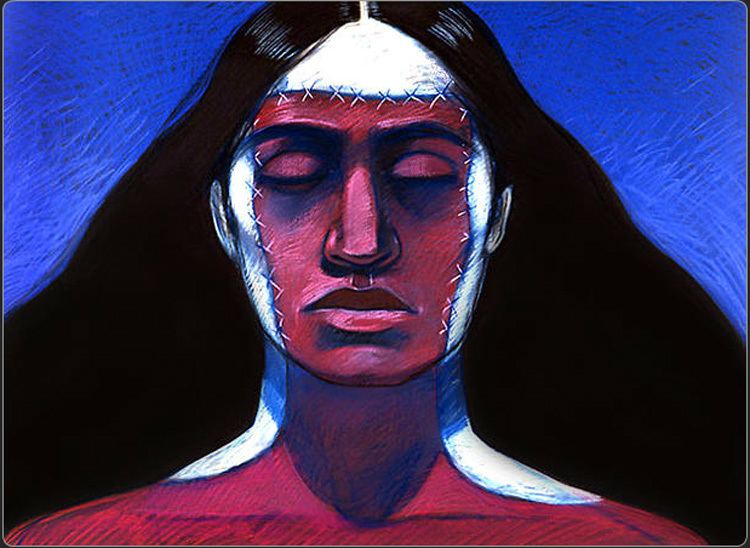
Hernández is currently (2012 to present) a member of the Arts & Letters Council of the Mexican Museum, San Francisco, and was the Chair of the Otis College of Art & Design Alumni Council from 2012–2015. She also served on the Board of Directors of the Mural Conservancy of Los Angeles from 2011–2015.
Solo Exhibitions
Two Person Exhibitions
Judithe Hernández & Patssi Valdez: Two Paths One Journey, Millard Sheets Art Center, Pomona, CA 2017
